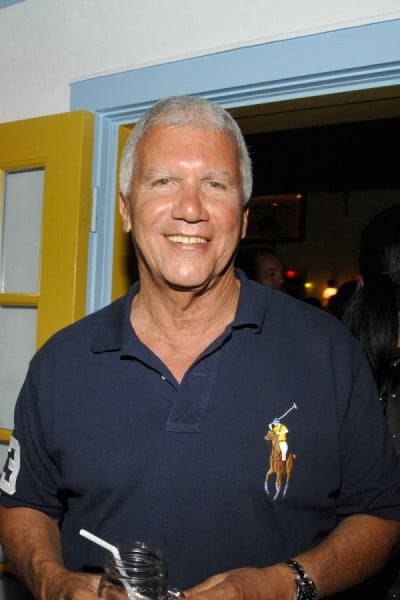
Andy Warhol, The Last Supper, 1986.
Courtesy: Sotheby’s.
Last weekend, in the leafy Hamptons, a superstar roster of panelists gathered at East Hampton’s Guild Hall to discuss “Andy Warhol: Global Phenomenon.” It was sponsored by the Foundation for Art and Preservation in Embassies, a group that arranges for the loan of works by major American artists to the nation’s outposts around the world.
On the superstar panel: collector Peter Brant, Whitney Museum chief curator Donna De Salvo, dealer Larry Gagosian, acolyte and friend “Baby” Jane Holzer, collector Alberto Mugrabi and real-estate investor, collector and NYSCA chairman Aby Rosen (see What is Collector Aby Rosen Doing as New York’s Arts Council Chairman). It was moderated by Bob Colacello, Warhol’s friend and biographer.
Here, some unexpected insights:
1) The Mugrabi family, the leading collectors of Warhol, now owns 900 works, up from 800 a few years ago, according to Alberto “Tico” Mugrabi. The first time he ever saw Andy Warhol’s work was in Switzerland at Art Basel. Seized by the colors, he bought 10 Last Suppers there for about $25,000 or $30,000 apiece.
2) Because he was largely apolitical, Bob Colacello forged, at Warhol’s request, the artist’s signature on 1980 German Green party campaign posters for Joseph Beuys.
3) The Museum of Modern Art never showed Warhol when he was alive, according to Colacello. Peter Brant said he attempted to gift the Met a Mao in about 1978, but they declined.
4) There is some thinking now that the extremely withdrawn Warhol, who did not like touching people and did not like speaking in public, may have had Asperger’s syndrome, said Colacello.
5) There are an estimated 760 [commissioned] Warhol portraits, almost all 40 × 40, said Aby Rosen, who owns a slew, some on display at his Casa Lever restaurant in Lever House. (The person most pictured in Warhol works is Jacqueline Kennedy.) Guggenheim curator Donna De Salvo says of the portraits that she’s started to think of them “as a kind of Facebook. He was an anthropologist.”
6) According to Colacello, Warhol wanted to swap a portrait of Dalí for one by the Surrealist master of himself. Dalí’s wife Gala nixed the plan, arguing that Warhol was just a photographer.
7) Larry Gagosian on meeting Warhol: “It was not a very auspicious meeting. I found him very remote.” They went on to meet several times over the “typical Warhol lunch—cold cuts…diet soda and bologna sandwiches.” Warhol was very “straightforward” in his business dealings, added Gagosian, nostalgically. “Now [with artists] you have to go through a lot of channels and there’s a lot of hocus-pocus”—and lawyers.
8) According to Colacello, Warhol dreamed of having one portrait of every person he ever pictured shown at the Metropolitan Museum of Art, edge-to-edge in a line and titled “Portrait of Society.”
9) Missed Opportunity: In 1986, according to Rosen, the Nieman Marcus Christmas catalogue offered Warhol commissioned portraits for $35,000.
10) De Salvo noted that when she first interviewed Warhol, she asked him what it was like to be a postmodernist icon? “He just stared at me.”
11) On Warhol’s relationships with his contemporaries: “He always felt rejected by Jasper [Johns],” noted Colacello. He was collected by both Lichtenstein and Rauschenberg. And Helen Frankenthaler once chewed him out, unsuccessfully, according to Jane Holzer, for hanging out so much with celebrities.
12) Warhol didn’t like his nose; he had his nose fixed in 1958, said De Salvo, who was introduced by Colacello as “the only person on the panel who has not made a fortune” through Andy Warhol.
Larry Gagosian ©Patrick McMullan;
Photo: PATRICK MCMULLAN/PatrickMcMullan.com.